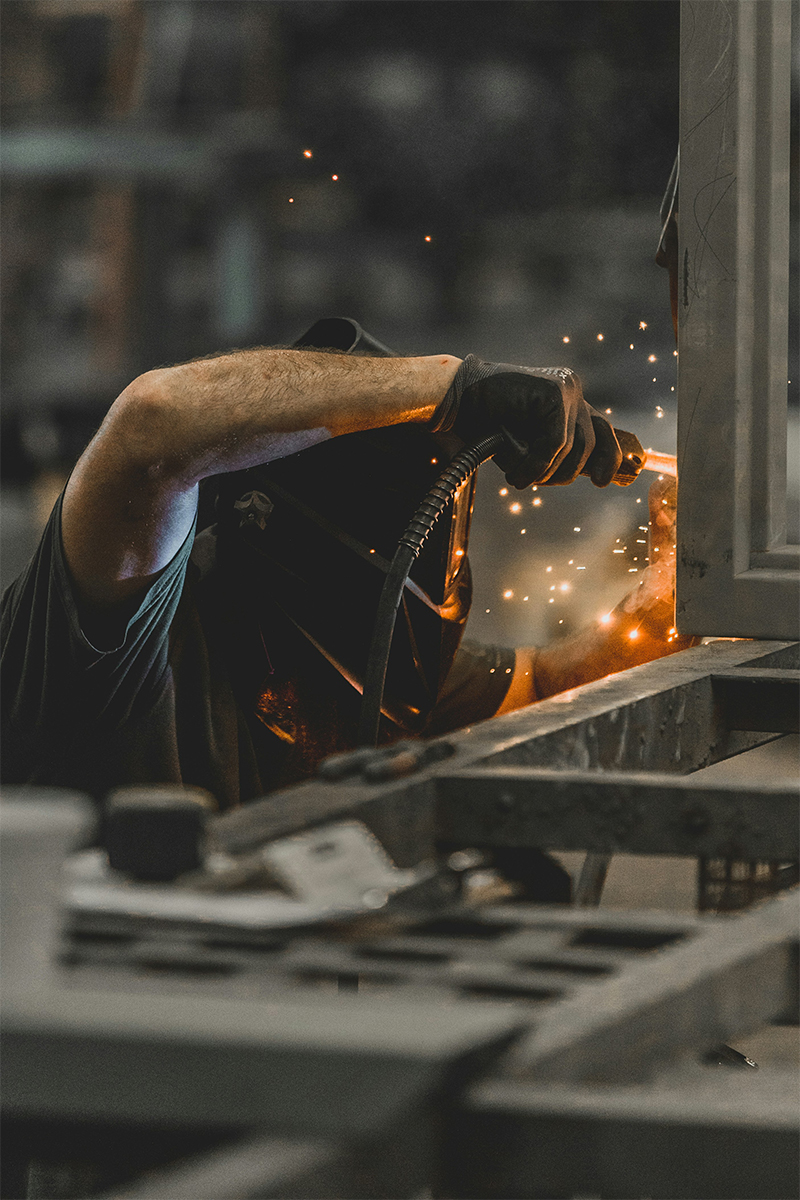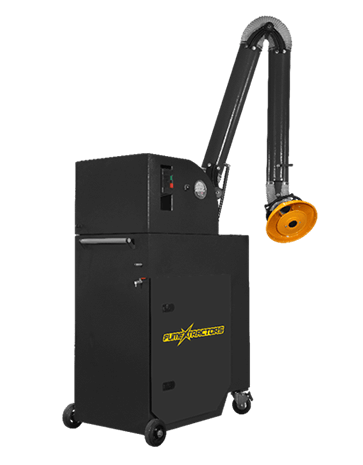Hexavalent Chromium Exposure Risks in Welding
Welding stainless steel and other chromium-containing alloys are well-known sources of hexavalent chromium exposure. The welding process subjects base metals to high temperatures, causing the conversion of less harmful Cr(III) into the highly toxic Cr(VI). While the original base material doesn't naturally contain hexavalent chromium, it becomes a notable part of the welding fumes produced when welding stainless steel and other metals that contain chromium.
The concentration of Cr(VI) in welding fumes varies based on several factors, including the welding process, current settings, electrode type, and the specific alloy of stainless steel. Studies highlight the dramatic variability in hexavalent chromium concentrations in weld fumes due to these factors. To accurately determine the concentration of weld fumes produced in a specific welding process or application, air sampling and laboratory testing are recommended.
Several factors influence hex chrome exposure during welding:
Base Materials: The chromium content in the base metal significantly impacts the presence of hexavalent chromium in weld fumes. Stainless steel, with chromium ranging from 10-30%, is a primary source. However, other alloys may also contain added chromium, necessitating awareness of the metal's chemical composition.
Welding Process: Welding methods like gas metal arc welding (GMAW), shielded metal arc welding (SMAW), and flux-cored arc welding (FCAW) create different levels of fumes and Cr(VI). Notably, stainless steel welding with these processes has been associated with significant Cr(VI) production.
Duration and Frequency of Welding: Extended welding sessions and frequent welding activities contribute to increased cumulative exposure to Cr(VI), thereby elevating the associated health risks.
Welding Parameters: Higher welding currents and voltages intensify fume generation, subsequently increasing Cr(VI) production. Controlling welding parameters is crucial in managing exposure levels.
Weld Fume Extraction: The effectiveness of air filtration and ventilation plays a pivotal role in determining exposure levels. Implementing local exhaust ventilation and source capture filtration solutions, such as fume arms, fume guns, backdraft plenums, or receiving hoods, proves effective in reducing Cr(VI) concentrations near welders.
Understanding and addressing these factors is crucial to keep welders safe and reduce the dangers linked to hexavalent chromium exposure. Employing comprehensive mitigation strategies, including proper ventilation and monitoring, is crucial in creating a healthy work environment in welding settings.
A study shared by the National Library of Medicine - National Center for Biotechnology Information, investigated hexavalent chromium (Cr(VI)) exposure in welders, focusing on 50 male practitioners of gas metal arc welding (GMAW) or tungsten inert gas welding (TIG). The research revealed a diverse scenario, with 62% of respirable Cr(VI) measurements below the LOQ and notable exceptions, such as shielded metal arc welding (SMAW) reaching a peak concentration of 180 µg m-3. The Cr(VI) content in total Cr varied significantly (4% to 82%, median 20%), and the correlation between Cr(VI) and nickel (Ni) was weaker (rs 0.42) than the association between total Cr and Ni in welding fumes (rs 0.83).
While most GMAW and TIG welders had respirable Cr(VI) concentrations below 1 µg m-3, the study highlighted instances of very high concentrations, particularly in SMAW. This underscores the necessity for a nuanced understanding of Cr(VI) exposure in welding fumes, challenging assumptions of uniform exposure levels.
Source: Exposure to hexavalent chromium in welders: Results of the WELDOX II field study
The Occupational Safety and Health Administration (OSHA) has established a permissible exposure limit (PEL) for hex chrome, set at 2.5 micrograms per cubic meter of air. OSHA requires employers to shield workers from breathing or directly coming into contact with hexavalent chromium fumes - processes like welding on stainless steel, high chrome alloys, and chrome-coated metal can expose workers to hexavalent chromium. This is crucial due to the potential lifelong health effects associated with unprotected overexposure to hexavalent chromium.
In terms of acceptable exposure levels, OSHA set a safety limit for Cr(VI) exposure in general industry at 5 micrograms per cubic meter over an 8-hour period. Employers must make certain that workers' exposures stay below this specified limit.
Employers should also consider lower exposure limits advised by the National Institute of Occupational Safety and Health (NIOSH) and the American Conference of Governmental Industrial Hygienists (ACGIH). While these recommendations aren't regulated by law, they provide industry best practices. Both NIOSH and ACGIH have recommended exposure limits of 0.2 µg/m3.
It's crucial to recognize the significant difference between the PEL for hexavalent chromium and the PEL for weld fume as a whole, currently set at 5 mg/m3—1,000 times higher than the hex chrome PEL. Consequently, employers must comprehensively understand the composition of welding fumes, considering individual PELs for hex chrome.
To safeguard welders from the hazards of hexavalent chromium exposure, it is imperative that employers enforce strict control measures, utilizing solutions like fume extractors, air filtration, and industrial ventilation. Fume extraction systems are designed to remove toxic air contaminants from at, above, or close to the source to prevent exposure by keeping dangerous contaminants below the acceptable limits.
Fume Xtractors products easily adapt to different machining processes, workspaces, and operational demands while maintaining a clean and safe working environment. We offer fume arms, downdraft tables, portables, welding booths, and more. We also carry ambient air cleaners as a secondary system to extract what isn't removed by the primary collection solution.
We specialize in turn-key solutions to effectively manage hexavalent chromium in welding environments — our dynamic range of products deliver sustained, high-performance results. Your commitment to workplace safety begins with Fume Xtractors, request a free quote to get started.
You may also like:
• What Effects Do Metal Coatings Have On Welding Fumes?
• Does NFPA 484: Standard for Combustible Metals Apply to You?
• Why Is Welding Fume Removal Important?


